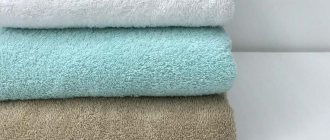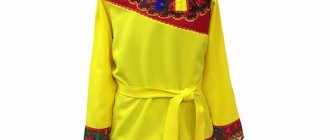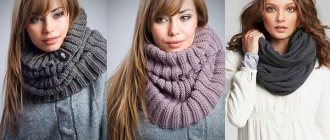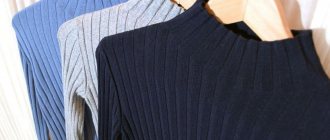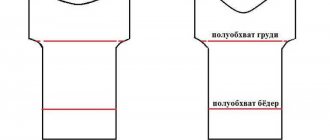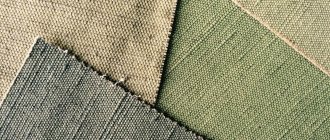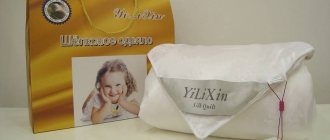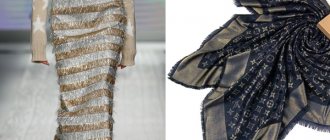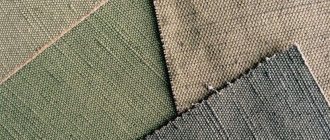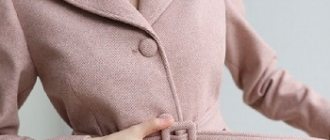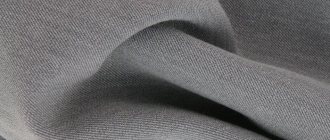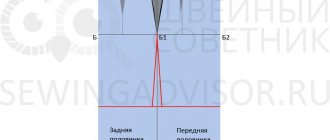Mohair care
Mohair fabric is expensive, true, but the investment in purchasing this durable, lustrous fabric is rewarded with its beauty, durability, comfort and durability. All-season fabric made from natural mohair fibers is warm and wicks away moisture easily in cold, wet weather. In warm weather, the fibers are comfortable due to their breathability. Unlike regular wool, mohair fiber is soft and does not scratch. With proper handling and care, mohair fabric will last you for many years. So, caring for mohair...
What does it consist of, what does it look like
The wool of a certain breed of goats, which live only in the Turkish province of Agora, is used in production. Goat wool is elastic and shiny, its length can reach 25 cm. Find out what satin jacquard fabric looks like and what it is used for here.
Things made from mohair are soft and fluffy; they keep you warm in severe frosts. The high cost is due to its quality.
Properties and quality, fabric density
Clothing not only retains heat, but also absorbs moisture and does not cause allergic reactions. The items do not irritate the skin; the fabric is widely used in the manufacture of children's clothing. Find out about the types of teak fabric at this link.
Things can be easily dyed, which allows you to get a wide range of shades.
Properties:
- aesthetic appearance;
- airiness;
- ease;
- strength;
- thermal insulation properties;
- environmental Safety;
- resistance to stalling;
- long service life;
- stretch resistance.
Production technology and production of mohair material
The wool of the Angora goat is used in production, which has a specific structure and properties. Due to the loose connection of fibers, it is customary to add sheep wool, acrylic yarn, and polyamide fibers to the raw materials. The result is a durable, dense, damage-resistant fabric. This article will tell you about canvas stitching.
Advantages and disadvantages
The material is distinguished by its softness, warmth and a wide choice of colors. Thus, woolen fabrics, previously predominantly of natural light tones, today have a wide color palette, which includes bright shades. The most popular colors today are turquoise, blue, burgundy and lilac.
Pros:
- natural composition;
- lightness and subtlety;
- strength and wear resistance;
- the canvas does not stretch and does not lose its shape;
- heat;
- softness;
- elasticity;
- rich color palette
- environmental friendliness.
Minuses:
- high price;
- requires careful handling and special care.
Mohair is often used for sewing children's clothing. Often this warm fabric is decorated with rhinestones, beads or sequins, giving the product a memorable and stylish look.
Kinds
The industry distinguishes several types of wool, its properties depend on the age of the animal. The wool of adult goats is considered stiffer; the yarn from young goats is the softest and most delicate. Read about the composition and properties of the material madapolam here.
Products made from such products require special care; the rules must be followed.
Varieties:
- Kid Mohair is considered the most expensive and valuable type of wool; it is obtained by shearing kids under six months old. The fibers are silky, thin, and tender; there is no characteristic shine. The thickness of the wool reaches 27 microns. The thin thread is intended for making shawls, jumpers, etc.
- Going Mohair - yarn is obtained after shearing animals under 2 years of age. The structure of the fibers is characterized by elasticity, strength, and silkiness. Feels good on the skin and is good for your health. The raw materials are used in the manufacture of simple woolen items that do not require special care. The result is a silky, strong yarn with a springy structure. Wool is pleasant to the touch and good for health when worn. It is used to knit woolen items that are easier to care for.
- Adult Mohair - the hair of adult goats is used in production. It is not soft, but it is also pleasant to touch. The raw materials are used in the manufacture of outerwear. Models made from such yarn are characterized by increased wear resistance and retain their original appearance for a long time. The items are very warm, ideal for harsh winters.
Preliminary preparation
Before immersing in water, the product must be prepared as follows:
- Remove the pellets, which often appear in the area of the sleeves and sides during prolonged wear, using a razor or other convenient method. It is prohibited to pull them out with your hands.
- Sew up the loop slits with a “forward needle” seam, baste the large collar to the main fabric, then these parts of the model will not stretch.
- Remove stains by blotting them with a swab soaked in one of the cleaning products (the choice depends on the type of contamination):
- in soap solution, dishwashing detergent, alcohol - to remove oil;
- in warm glycerin - to clean traces of juice, wine, herbs;
- lemon juice - if stains from tea or coffee are detected.
Scope of application of blended yarn
The scope of application is quite wide; the yarn is used in the furniture and textile industries. Widely used in the manufacture of outerwear, the yarn is indispensable in the production of dresses and suits. Easily processed, like damascus fabric, it can be used in the manufacture of elegant models. Rough types are used in the manufacture of warm blankets, upholstery, carpets, and curtains. The material is a raw material for the production of toys, and is widely used in the manufacture of wigs and doll hair. Read about the description and characteristics of light fabric in this article.
The finest Kid Mohair fiber is used to create elite styles that famous designer clothing houses work with. The Goating fiber type is used in hand and industrial knitting.
It is worth noting that the demand for mohair is only increasing over time, which is explained by its unique properties. The yarn is used to create stylish original items that delight fashionistas around the world.
All models are practical and durable, subject to proper care.
Mohair clothing
Mohair yarn has unique characteristics, which allows it to be used to create a variety of clothes. Its lightness is reminiscent of silk, which creates a deceptive impression of airflow. In fact, mohair retains heat very well. Mohair clothes are always warm and comfortable in winter, and cool in summer.
The yarn is widely used in the manufacture of dresses, suits, tunics, scarves, mittens, socks, and gloves. The clothes can be used for everyday wear; sweaters do not feel matted or lose their shape. Suits are also made from double-thread footer fabric.
History of mohair wool
The Turkish province of Angora is considered the homeland of Angora goats, from where they got their name. That's why mohair is sometimes called angora. For a long time, there was a ban on the export of both goats and their wool from Turkey in order to maintain a monopoly on their production. Only at the beginning of the nineteenth century were Europeans able to export Angora goats and fabrics made from their wool from the country. The name “mohair” itself arose after a scandal with Chinese yarn made from rabbit fluff in the 15th century, which began to be sold under the guise of Angora wool, after which Angora wool was renamed mohair (which in Arabic meant “chosen”, “best”, “selected fleece”) ").
Recommendations for caring for mohair products
Compliance with the rules of care will help to extend the service life of products; delicate storage also plays an important role. All nuances must be observed. Mohair, like all fabrics, periodically gets dirty and stains appear on it.
The ideal option for caring for mohair fabric is dry cleaning. Drying wet items on a radiator is strictly prohibited; natural drying is considered the best option in this case.
When removing stains, it is recommended to use a damp sponge or brush; it is recommended to clean things as carefully as possible.
When washing, you can use the manual method; the water temperature should not exceed room temperature. When using a washing machine, it is recommended to choose gentle modes.
It is recommended to place the item in a special bag for washing; when doing it, it is recommended to use wool powders.
The washed item must be easily wrung out and placed on a horizontal surface, previously covered with a water-absorbing cloth. Any thermal effect on tissue, including batteries, radiators, and sun rays, is contraindicated. Steaming is considered an excellent alternative to ironing mohair and footer fabric.
When storing mohair items, it is recommended to use hangers; items should be fastened. The second option is storage in boxes folded at the seams. After such storage, the clothes should hang down; they can also be laid out on a horizontal surface. All wrinkles should disappear after a while. The room where things are stored needs regular ventilation; the doors should be opened periodically.
Special tablets that should be carefully placed in drawers will help protect clothes from moths.
What type of fabric is this
Mohair is a wool fabric made from the hair (not fluff!) of Angora goats. Mohair is often called “diamond fiber” because of its inherent shine and exceptional strength.
Mohair colors
The leaders in the production of mohair fabric are South Africa, which produces 60% of the world's output of this material, and the USA.
What is mohair
Mohair is a yarn from the wool of Angora goats, consisting of long and voluminous fibers with fluff, the literal translation of the word is “the best goat hair.” Mohair wool is durable, elastic, fire-resistant, does not wrinkle, is considered a high-quality fiber, and is more expensive than sheep wool. The content of Angora goat wool in the yarn does not exceed 83%. The natural color of the source material is uniform from white to brown and gray, with a characteristic shine.
Over the years, the Turks have learned not only to properly raise animals and care for their fur, but also to use it successfully. The material was the best, its enormous popularity created demand for export to other countries. When Turkish wool began to enter the international market, competitors appeared. The Chinese were the first to supply their yarn from a breed of wild rabbits, they called it “angora”.
In response, the Turks came up with their own definition of the type of material - mohair. After a while, Turkey began to lose its leadership position; South Africa and America began producing yarn. Suitable climatic conditions on the continents for raising goats made it possible to breed a similar breed and produce products from animal wool. The material turned out differently for everyone. American - with dense and long fibers, shiny surface. South African - with a smooth, even surface, and Australian mohair was distinguished by its fineness.
Machine washable
In an automatic washing machine, mohair items are washed only in two cases:
- if permitted by the manufacturer;
- if the fabric is knitted from dense threads.
It is not advisable to keep mohair in liquid for a long time and exert active mechanical influence on it. And with machine washing, both are inevitable. If you still decide to wash the item in the machine, you should listen to these recommendations:
- As with the manual cleaning option, each product is cleaned separately.
- If powder rather than liquid detergent is placed in the cuvette, it is best to turn on the “baby comfort” mode, which involves double rinsing.
- Before putting it into the drum, the coat or jumper is turned inside out, then carefully folded with the sleeves inward and placed in a mesh laundry bag. This will preserve not only the product, but also the mechanism of the machine, since it can become clogged with lint.
- The panel sets the “delicate wash” or “wool” mode. The spin should be minimal (no more than 500 revolutions). If the item is small, it is better to turn it off. The same needs to be done with drying.
Handwash
Mohair yarn is delicate and high maintenance. The finest Kid mohair and royal mohair with very long pile are especially capricious. Products made from these types of yarn are recommended to be washed exclusively by hand. The following requirements apply to hand washing:
Find out what water temperature the manufacturer recommends. If there is no label, water is poured into the basin according to the standard:
- for gossamer scarves and thin openwork jumpers, it should not be hotter than 35° (optimally 30°);
- for outerwear made of thick Goating and Adult Mohair, the temperature (if heavily soiled) can be increased to 40°.
If you raise the water temperature above the recommended one, the product will lose its shape.
An important issue is the choice of detergents. Suitable for hand washing:
- shavings of baby soap, dissolved in water and whipped into foam (alkaline laundry soap makes the fabric feel matted);
- liquid wool detergent (powder will be difficult to rinse out);
- shampoo.
Do not use detergents containing chlorine. Do you need to return the model to white? Add 2 tsp to the water. Boers.
If the water is hard, it should be softened, as due to excess salts, mohair loses its silkiness. To do this, add a purchased water softener or baking soda (10 g per 10 l) to the detergent. Before lowering the product into the basin, mix the solution thoroughly.
Mohair fabric does not tolerate prolonged contact with water, so soaking time should not exceed a quarter of an hour. In this case, only one item is washed at a time.
Intense friction and twisting are the enemies of any wool. During washing, the product is only slightly squeezed with your palms.
For rinsing, use water at the same temperature as for the main wash. Woolen models should be rinsed several times, changing the water. During the last rinse, add to the container:
- for light-colored products - fabric or hair conditioner or 1 tsp. glycerin;
- for colored people – 9% table vinegar (5 ml per 10 l) or pre-dissolved citric acid;
- a mixture of ammonia (45 ml), turpentine (15 ml) and vodka (30 ml), if the surface is matted.
The clean item is immediately removed from the water and placed in a dry container for 30-40 minutes. The canvas is periodically slightly compressed, draining the liquid from the basin.
Classification of mohair threads
There is a generally accepted classification of mohair varieties. The threads are distinguished not only by the method of production, but also by the characteristics of the material:
- Kid Mohair (made from the wool of a young six-month-old kid obtained during the first haircut; this yarn is distinguished by its extraordinary softness and tenderness);
- Going Mohair (the quality is slightly lower, but still remains high, obtained from wool taken during the second shearing of a young goat);
- Adult Mohair (also soft, but not a luxury yarn; it is obtained from the wool of an adult goat).
In a skein of thread, mohair is usually not the only material; it is mixed with other threads. The share of natural mohair in such yarn is usually 10–83%. But despite the additives, the thread remains soft and has a unique ability to retain heat in an almost weightless fabric.
Flaws
One of the main disadvantages of this amazing fabric is, perhaps, its high cost. Materials like kid or superkid cannot be called accessible to the general consumer. The second significant drawback is the need for the most careful, proper care. If all operating requirements are not met, the item will quickly deteriorate.
In addition, like any woolen textile, the one described can prick or peel (especially if made from low-quality raw materials by unscrupulous manufacturers), and also, due to its well-deserved popularity, is often counterfeited.
Cleaning methods
- If the wool is not very dirty, you can clean it using the dry cleaning method. But here you need to know that not all chemicals are suitable for cleaning it. Sometimes it is enough to treat a separate stain with a cotton swab and a soap solution warm to 30°C. Then rinse with clean water and blot the area on both sides with a terry towel. After cleaning, the product must be laid out on a cloth for subsequent drying.
IMPORTANT! Do not try to dry the treated wet area with a hair dryer.
- If the item requires special cleaning, you can contact a dry cleaner, but know that they will not give you a guarantee that the wool will not lose its appearance.
- If you decide to wash your mohair yourself, you can use either the hand washing method or the washing machine. But to do this, you need to know a few rules that will prevent you from ruining an expensive item.
How to dry mohair and can it be ironed?
An item hung on a rope, hanger or the back of a chair will stretch out, but the mark of the fold will remain on it.
Mohair should only be dried in a horizontal position.
- When the canvas swells in the basin, the model is wrapped in a towel and gently squeezed so that water is absorbed into the fabric.
- The product is unrolled and laid out on the table, with a cloth that absorbs water well placed under it. The mohair is turned over during the drying process.
- Do not expose mohair items to bright sunlight, hang them on a radiator, or use hot air.
Ironing fabric, especially openwork knitted fabric, is highly discouraged. If there is an urgent need for this, the model is turned inside out and processed with an iron set to minimum power through a thin fabric. But there are many ways to iron things without an iron; for example, a steam bath is suitable for sweaters and other mohair items.
To make the pile fluff up again, comb it with a soft brush, put the item in the freezer for 2 hours or hold it over steam (hang it over a container of boiling water or turn on very hot water).
Areas of use
Mohair threads are used mainly for yarn of warm clothes, when sewing suits, dresses, coats and elegant clothes. Mohair is used to make: bedspreads, warm blankets, children's toys, hair for dolls, high-quality wigs, upholstery material, curtains, carpets. Only mixed fiber in combination with acrylic thread has an affordable price.
Kid fiber is used to create luxury fabric, and prestigious clothing brands work with it. Goating Mohair is intended for industrial, hand knitting and is considered a high quality yarn. Warm knitwear never goes out of fashion; yarn based on Angora wool is in demand among knitters. Stylish and special items are made from naturally colored mohair with the addition of the finest wool or silk. Textile, dense, and wool products are made from Adult Mohair yarn.
- Vitamin salad: recipes
- Heart attack - symptoms, first signs in women and men
- Can pregnant women have coffee and how much?
